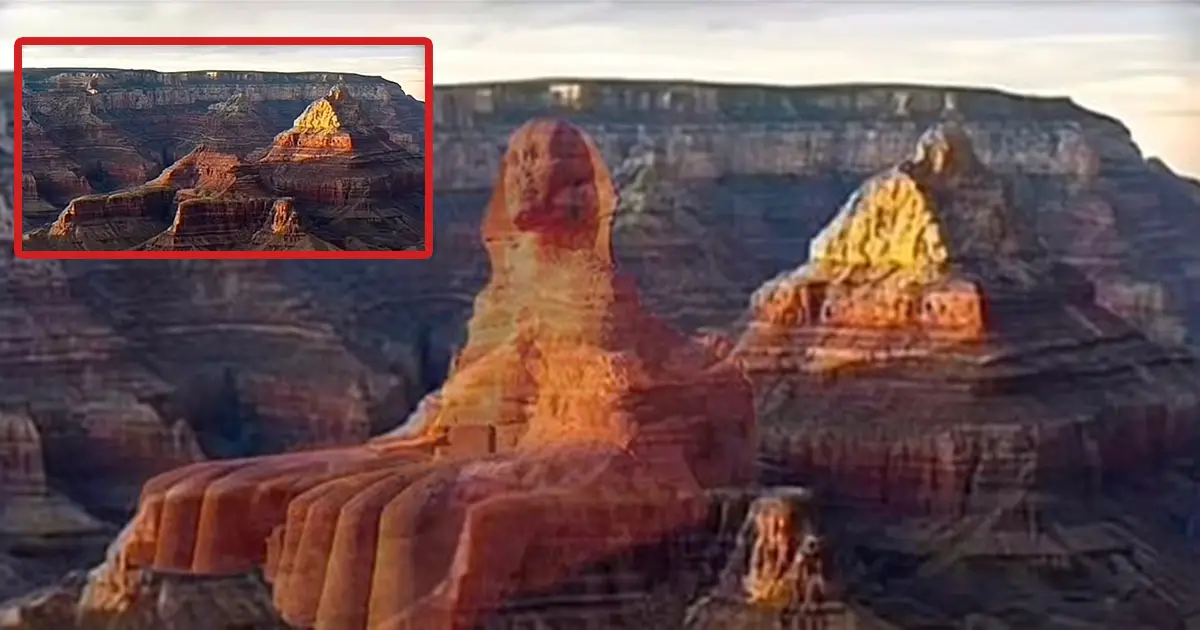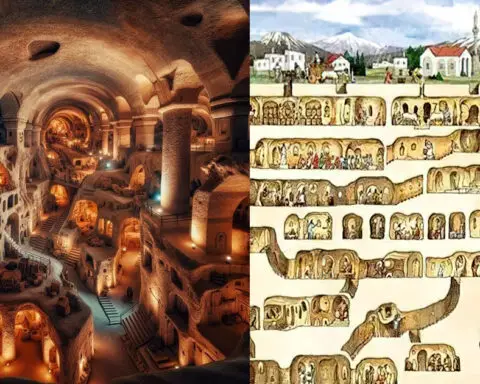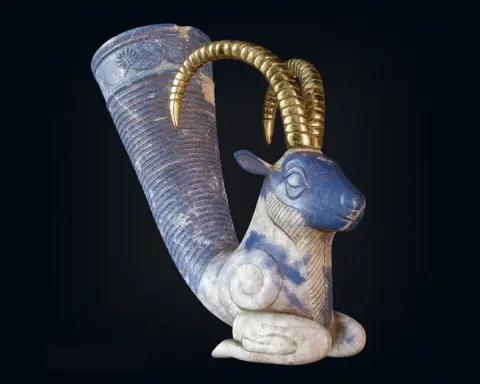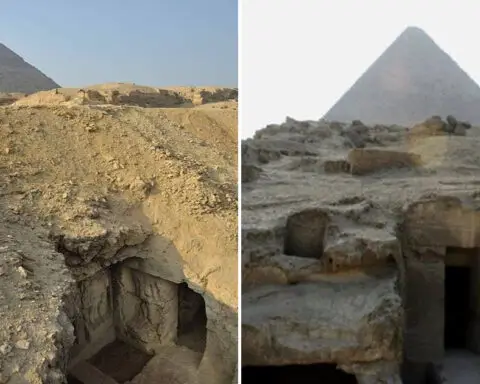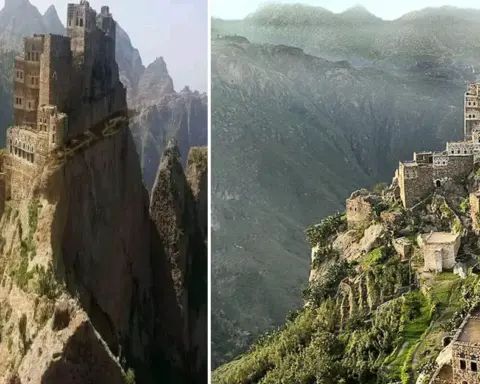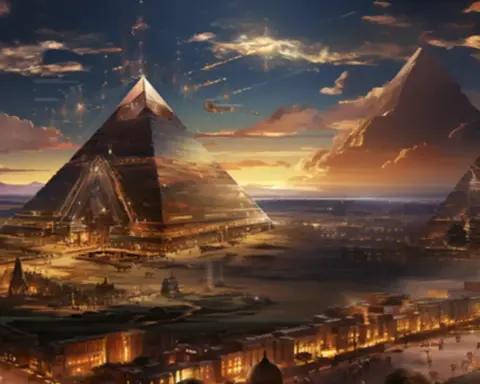Amidst the awe-inspiring grandeur of the Grand Canyon, a geological formation known as the Vishnu Temple casts a profound silhouette against the azure sky. This natural monument, named for its majestic and temple-like appearance, harbors a mystery as deep as the canyon itself. Recent discourse has ignited the imagination of historians and adventurers alike, suggesting the existence of not only a sphinx-like figure but also the ruins of an ancient pyramid, reminiscent of the iconic Sphinx and Great Pyramid of Giza, nestled in its vicinity.
The Sphinx of the Grand Canyon
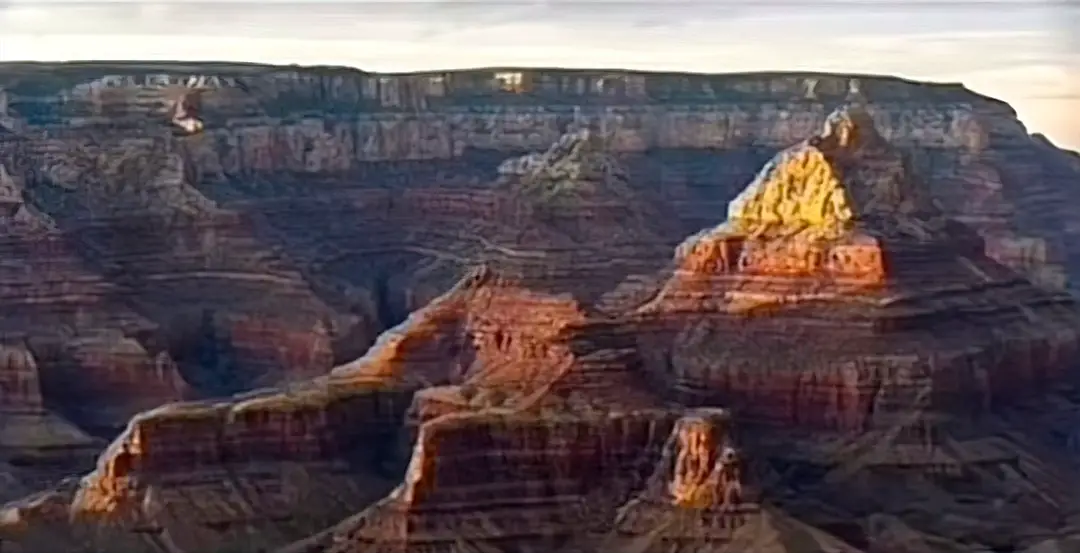
The possibility of a sphinx-like formation overlooking the Grand Canyon redefines our understanding of ancient civilizations and their reach. The outline, suggested to be carved by the hands of time and nature, bears a striking resemblance to the Sphinx of Giza, evoking a sense of wonder and speculative history. Could the ancestors of the Americas have been inspired by, or even connected to, the ancient Egyptians, crafting their monumental guardian within the vast landscapes of what is now the United States?
A Hidden Pyramid Unveiled
In the shadow of this speculative sphinx, explorers and theorists propose the presence of an even more astonishing feature: the ruins of an ancient pyramid. This suggestion pushes the boundaries of our historical narrative, proposing a parallel with the Egyptian Sphinx’s eternal gaze upon the Great Pyramid. If such a pyramid once stood, it would suggest a level of sophistication and architectural capability among ancient American cultures that parallels the grandeur of ancient Egypt.

The very notion challenges conventional archaeological wisdom, inviting scholars to consider the Grand Canyon not just as a natural wonder but as a potential repository of lost civilizations. The Vishnu Temple, with its enigmatic presence, becomes a focal point for this debate, embodying the mystery and intrigue of ancient legacies left in stone.
The Quest for Evidence
Despite the compelling narrative woven by these hypotheses, the quest for concrete evidence remains at the forefront of this exploration. The rugged terrain and vast expanses of the Grand Canyon present formidable challenges to archaeological inquiry, yet the potential rewards of uncovering a tangible link between the landscapes of the Grand Canyon and the architectural feats of ancient civilizations fuel the determination of researchers.
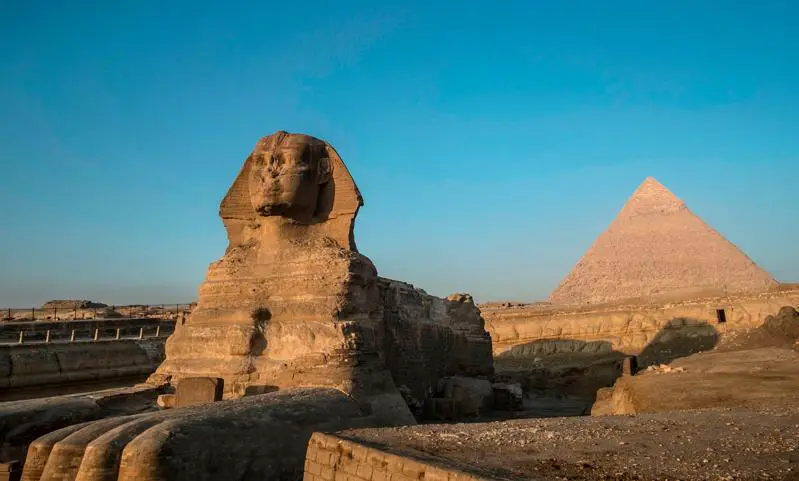
The absence of direct archaeological evidence and the reliance on geological formations as speculative markers mean that the theory of a sphinx and pyramid at the Vishnu Temple remains a captivating hypothesis. Yet, it is a hypothesis that ignites the imagination and invites a reevaluation of prehistoric cultural exchanges and the architectural expressions of ancient peoples.
The Implications of a Transcontinental Connection
The speculative presence of a sphinx and pyramid at the Vishnu Temple raises profound questions about the interconnectedness of ancient civilizations. Such a discovery would suggest a level of transcontinental communication or parallel development previously deemed improbable by mainstream historical and archaeological thought.
This tantalizing possibility prompts a reconsideration of historical narratives, encouraging a more holistic view of humanity’s architectural and cultural achievements. It underscores the importance of open-mindedness in the exploration of human history, advocating for a narrative that embraces the mysteries lying in wait within our planet’s most ancient landscapes.
Conclusion: A Journey into the Unknown
The Vishnu Temple, with its imposing stature and enigmatic allure, stands as a beacon for those drawn to the mysteries of the past. The speculative existence of a sphinx and pyramid within its vicinity invites us into a realm of mystery and exploration, challenging our perceptions of what is known and what remains to be discovered.
As we stand on the brink of these uncharted territories, the Grand Canyon’s depths beckon us to delve deeper, to question the narratives handed down through generations, and embark on a journey into the unknown. The quest to unravel the secrets of the Vishnu Temple and its speculated ancient guardians is not merely an archaeological endeavor; it is a journey into the heart of human curiosity, a testament to our unending quest for understanding the mysteries of our world and the echoes of civilizations long vanished.
As the canyon whispers its ancient secrets, the possibility of a sphinx and pyramid among its wonders stands as a compelling invitation to explore, dream, and discover the threads that connect the tapestry of human history across continents and millennia.

